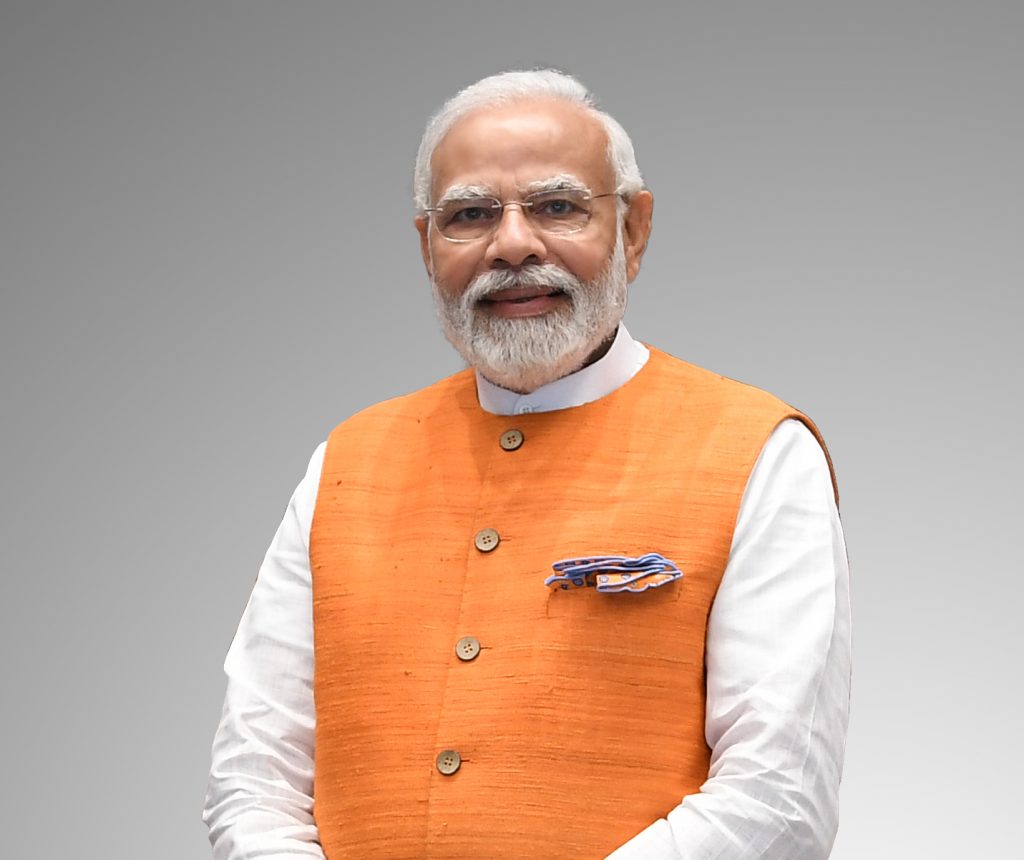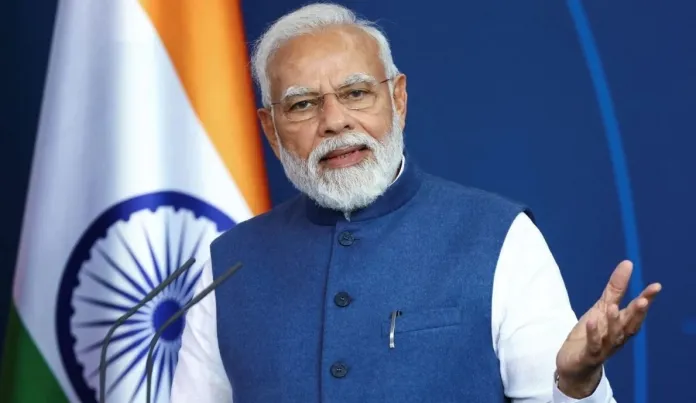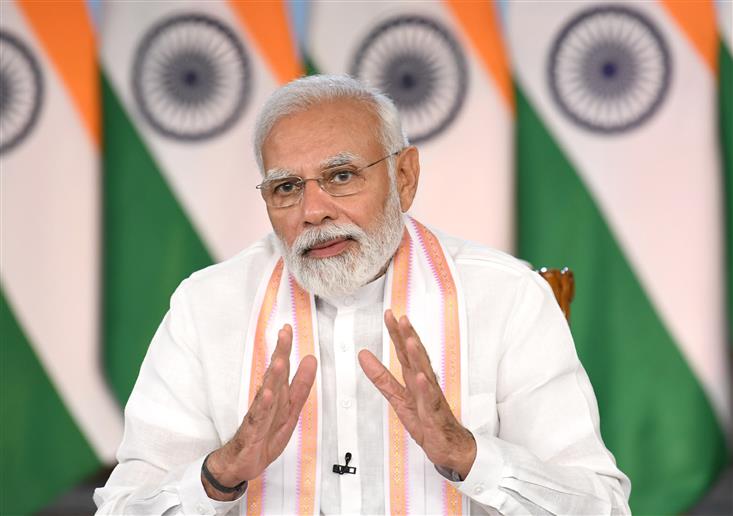Narendra Modi, the current Prime Minister of India, is a dynamic and influential leader who has risen from humble beginnings to become one of the most powerful and respected figures in Indian politics. His journey from a tea-seller to holding the highest office in the nation is nothing short of remarkable, and his leadership style and policies have made a significant impact on the country’s development and progress.
Narendra Damodardas Modi was born on September 17, 1950, in Vadnagar, a small town in Gujarat, India. He was the third of six children born to Damodardas Mulchand Modi and Hiraben Modi. Modi’s family belonged to the Ghanchi community, which is classified as Other Backward Class (OBC) in India. His father ran a tea stall at the Vadnagar railway station, and Modi helped out at the stall during his childhood. This early exposure to hard work and entrepreneurship instilled in him a strong work ethic and a determination to succeed against all odds.

Modi’s early education took place in a local school in Vadnagar, where he excelled academically and showed a keen interest in extracurricular activities such as debate and theatre. He was a diligent student and showed leadership qualities from a young age. After completing his higher secondary education, Modi left home at the age of 17 and traveled across India, visiting various spiritual and cultural centers. This period of self-discovery and exploration shaped Modi’s worldview and instilled in him a deep sense of patriotism and pride in India’s rich cultural heritage.
In the early 1970s, Modi joined the Rashtriya Swayamsevak Sangh (RSS), a Hindu nationalist organization that advocates for cultural and social unity in India. The RSS played a crucial role in shaping Modi’s ideology and political beliefs, and he quickly rose through the ranks of the organization due to his organizational skills and dedication. Modi’s association with the RSS provided him with a solid foundation in grassroots politics and a platform to engage with a wide cross-section of Indian society.
In 1974, Modi became a full-time worker for the RSS and was assigned to the Akhil Bharatiya Vidyarthi Parishad (ABVP), the student wing of the organization. He quickly made a name for himself as a skilled organizer and effective communicator, and his leadership abilities caught the attention of senior RSS leaders. Over the next few years, Modi held several leadership positions within the RSS and its affiliated organizations, honing his political skills and expanding his network of supporters.

You can read our another post on Twin Temple of Gandharadi: A Marvel of Ancient Architecture
In 1985, Modi was appointed as the general secretary of the Gujarat unit of the Bharatiya Janata Party (BJP), the political arm of the RSS. His organizational abilities and dedication to the party’s cause earned him the respect and admiration of his colleagues, and he soon emerged as a key figure in Gujarat’s political landscape. Modi quickly rose through the ranks of the BJP, holding several key positions within the party and playing a crucial role in its electoral campaigns.
In 2001, Modi was appointed as the Chief Minister of Gujarat, following the resignation of his predecessor, Keshubhai Patel. This was a watershed moment in Modi’s political career, as it marked his first foray into executive leadership and governance. Modi wasted no time in implementing a series of bold reforms and initiatives aimed at revitalizing Gujarat’s economy and improving the quality of life for its residents. His focus on infrastructure development, industrial growth, and agricultural modernization helped Gujarat emerge as one of India’s most prosperous and progressive states.
Modi’s tenure as Chief Minister of Gujarat was not without controversy, however. In 2002, the state witnessed a series of communal riots that resulted in the deaths of hundreds of people, mostly from the Muslim community. Modi was criticized for his handling of the situation and faced allegations of complicity in the violence. Despite these challenges, Modi was able to maintain his popularity among a significant section of the state’s population, thanks to his economic policies and developmental initiatives.
In 2014, Modi spearheaded the BJP’s campaign for the general elections and led the party to a resounding victory, securing a majority in the Lok Sabha, the lower house of India’s parliament. This historic win made Modi the country’s 14th Prime Minister and marked a turning point in Indian politics. Modi’s leadership style and vision for the country struck a chord with millions of Indians, who saw him as a decisive and dynamic leader capable of steering India towards a brighter future.

As Prime Minister, Modi has introduced a series of ambitious reforms and programs aimed at transforming India’s economy and society. His flagship initiatives, such as Swachh Bharat Abhiyan (Clean India Mission), Make in India, Digital India, and Jan Dhan Yojana, have been instrumental in driving economic growth, promoting entrepreneurship, and improving access to essential services for millions of Indians. Modi’s emphasis on infrastructure development, rural electrification, and financial inclusion has helped bridge the gap between urban and rural areas and create new opportunities for economic progress.
Modi’s foreign policy initiatives have also been widely praised for enhancing India’s global standing and strengthening its relationships with key allies. His outreach efforts to countries in the South Asian region and beyond have helped bolster India’s influence and foster closer ties with strategic partners. Modi’s personal diplomacy and engagement with world leaders have played a crucial role in advancing India’s interests on the global stage and positioning the country as a key player in regional and international affairs.
Despite his many achievements and popularity, Narendra Modi has faced criticism from various quarters for his handling of certain issues, including religious intolerance, freedom of expression, and economic disparities. Critics accuse Modi of pursuing a divisive agenda that discriminates against religious and ethnic minorities and stifles dissent. His government’s decision to revoke the special status of Jammu and Kashmir, the controversial Citizenship Amendment Act (CAA), and the handling of the COVID-19 pandemic have all drawn criticism from human rights organizations and opposition parties.

However, Modi remains a polarizing figure in Indian politics, with staunch supporters hailing him as a bold and visionary leader who is transforming India’s destiny. His strong leadership, charismatic personality, and ability to connect with the masses have earned him a cult following among a significant segment of the Indian population. Modi’s unwavering commitment to the country’s progress and development, and his efforts to create an inclusive and prosperous society, have struck a chord with millions of Indians who see him as a champion of their aspirations and dreams.
FAQ For Biography Of Narendra Modi
What is Narendra Modi’s background and early life?
Narendra Modi was born on September 17, 1950, in Vadnagar, a small town in Gujarat, India. He came from a humble background and worked at a young age selling tea with his father. He later joined the Rashtriya Swayamsevak Sangh (RSS), a Hindu nationalist organization, and rose through the ranks in politics.
What is Narendra Modi’s political career?
Narendra Modi began his political career with the Bharatiya Janata Party (BJP) in the early 1980s. He served as the Chief Minister of Gujarat from 2001 to 2014, and during his tenure, he implemented several reforms to boost economic growth and development in the state. In 2014, he was elected as the Prime Minister of India and was re-elected in 2019.
What are some key achievements of Narendra Modi as Prime Minister?
As Prime Minister, Narendra Modi has introduced several initiatives, including demonetization, Goods and Services Tax (GST), and the Swachh Bharat Abhiyan (Clean India Mission). He has also focused on improving infrastructure, digital connectivity, and healthcare in the country.
What controversies has Narendra Modi faced during his tenure as Prime Minister?
Narendra Modi has faced criticism for his handling of communal violence in Gujarat in 2002, which occurred during his tenure as Chief Minister. He has also been criticized for his government’s handling of the COVID-19 pandemic and for his economic policies.
What is Narendra Modi’s vision for India’s future?
Narendra Modi has outlined his vision for a “New India,” which focuses on economic growth, social welfare, infrastructure development, and digitalization. He has also emphasized the importance of promoting Indian culture and heritage on the global stage.
In conclusion, Narendra Modi’s journey from a tea-seller to the Prime Minister of India is a testament to the power of determination, hard work, and perseverance. His rise to power reflects the opportunities and challenges of India’s democratic system and the complex dynamics of its political landscape. Modi’s leadership style, policy decisions, and vision for the country have left an indelible mark on Indian society and set the stage for a new era of growth and prosperity. Whether one admires him or criticizes him, there is no denying the impact that Narendra Modi has had on India’s political, social, and economic landscape.
